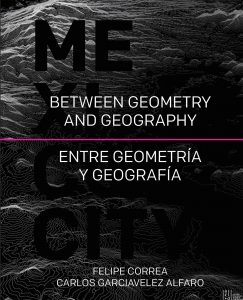Mexico City: Between Geometry and Geography

Applied Research and Design 2014
Unique in scope, scale, and civic aspiration, Mexico City is the ideal laboratory to test the capacity of urban design to construct a spatial synthesis from the geometric and organizational complexity of the city’s layered urban scenarios. Between Geometry and Geography: Mexico City examines—through photography, archival material, and analytical drawings—the urbanistic evolution of Mexico City. The volume focuses specifically on the relationship between major public works projects and the urban fragments they have created in order to construct a visual analysis of the most dominant urban morphologies at play in the city. Organized in seven topical chapters —From Lake to City, From City to Metropolis, Mobility Networks, Logistical Footprints, Housing Stock, Hydrological Landscapes, and Urban Visions— the book tests the ability of design to confront and break down the perceived immensity of Mexico City by singling out and analyzing key urban projects that have shaped the city for over 600 years. Furthermore, central to this volume is an exploration of how the methodological diversity of urban design can help rethink ongoing mobility projects in the city as the backbone for much more ambitious and integral urban projects of diverse scope and ambition.
The volume also includes a collection of writings by Loreta Castro Reguera, Pablo Landa, Louise Noelle, Peter G. Rowe, and Mario Schjetnan along with photo spreads from Archivo Fundación ICA and from Iwan Baan. The pieces introduce a more diverse set of views on the exceptional urban richness of Mexico City—the largest metropolis of the Spanish-speaking world.